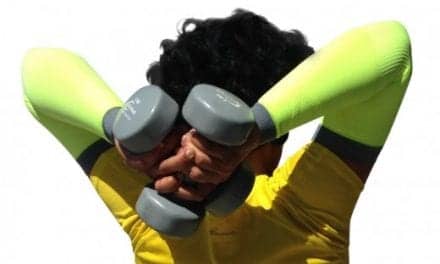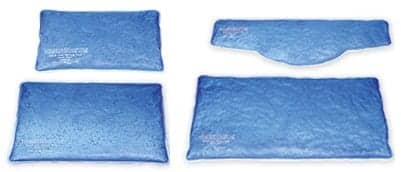By Rushi Shahiwala, PT
Nearly everyone suffers from pain at some point in their lifetime. According to the American Academy of Pain Medicine, chronic pain affects 100 million Americans, which is more than diabetes, heart disease, and cancer combined. The National Institutes of Health estimate that pain also represents a big economic burden in the United States, costing anywhere between $560 and $635 billion each year. The majority of patients who undergo physical therapy experience some form of pain. And yet, despite the fact that pain is a common occurrence and a large burden on individuals and the society, it remains a difficult condition to diagnose and treat. This is partly due to the fact that pain is a subjective perception that is difficult to measure objectively. For example, the amount of pain that a person feels is not necessarily related to the amount of damage in the tissue. The amount of pain can also vary with the environment or psychological state, and people often report feeling more pain if they are depressed. Given these complexities in pain perception, treatment of pain often requires multiple modalities. In this article, I will discuss the methods that I commonly use with my patients at the Sports Science Lab, Staten Island, NY, and discuss the specific conditions for which they are used.
[sidebar float=”right” width=”250″]Product Resources
The following companies provide products for pain management:
Amrex Electrotherapy Equipment
www.amrexusa.com
Ari-Med Pharmaceuticals
www.ari-med.com
Battle Creek Equipment Company
www.battlecreekequipment.com
Biofreeze (Performance Health)
www.biofreeze.com
China-Gel
www.chinagel.com
Dynatronics Corp
www.dynatronics.com
Everyway4all
www.everyway4all.com
E-Z Release Myofascial Technique
www.ezreleasemyo.com
Mettler Electronics
www.mettlerelectronics.com
Parker Laboratories
www.parkerlabs.com
PHS Medical by Pivotal Health Solutions
www.phsmedicalsolutions.com
Richmar
www.richmarweb.com
Sombra Professional Therapy Products
www.sombrausa.com
Sore No More
www.sorenomore.com
Southwest Technologies
www.elastogel.com[/sidebar]
Physiology of Pain
This unique way of how we experience pain is due to the intricate nature of brain pathways that respond to pain. Nociceptors in peripheral tissues detect painful stimuli and transmit this information to the dorsal horn of the spinal cord. When neurons in the dorsal horn reach a critical level of excitation from the peripheral nerves, the information is transmitted to higher centers in the brain, which analyze it and produce an appropriate response. Each synapse in the pain pathways can be modulated by inputs from other sensory systems, and the brain’s response to pain varies based on environmental and physiological conditions. For example, when pain persists, nociceptors become more sensitive, meaning that even a weak stimulus can produce a painful feeling, which is a mechanism for chronic pain.
Pain can be classified into two broad categories, based on which part of the pathway is affected. Nociceptive pain is experienced when nociceptors, or pain receptors, are involved. Nociceptive pain can be further subdivided into somatic or musculoskeletal pain, which is felt on the skin, muscles, joints, bones, and ligaments; and visceral pain, which is felt on the internal organs. Nociceptors detect various sensory modalities, including temperature, vibration, stretch, and inflammation, all of which can produce painful sensations if present at a high enough level. Non-nociceptive pain, on the other hand, affects the central nervous system. “Pinched nerve,” for example, often refers to non-nociceptive pain because it affects the nerve itself and not the nerve endings.
Pain Management in Physical Therapy
In physical therapy, the goal of pain management is not only to reduce a patient’s sensation of pain, but also to address the underlying causes. As a physical therapist, I take a multidimensional approach to treatment and use modalities that address both symptoms and causes of pain in each patient. Considering the complexity of pain physiology, it is not surprising that a one-size-fits-all approach is not effective in pain management. While I use manual therapy on the majority of my patients, I prefer to combine it with other methods in order to achieve maximal pain relief and recover the full range of motion. Recent advances in technology provide physical therapists with novel methods of treating pain, speeding up recovery, returning the full function, and restoring the range of motion. These include lasers, cryotherapy, IFC, pneumatic compression, ultrasound, and topical analgesics.
Therapeutic Laser
Lasers have become a popular choice of pain treatment in recent years. Light emitted by lasers penetrates the skin and is absorbed by cells in muscles, joints, blood, and nerves. Light energy stimulates cellular reactions that produce enzymes, increase blood and lymph flow, and stimulate collagen production, all of which accelerate the healing process and reduce inflammation and pain. Each wavelength of light targets specific cellular processes. At the Sports Science Lab, I use LaserStim’s TARGET technology with MR 4 Laser Stim produced by Multiradiance Medical. This technology combines super pulsed laser (905 nm), which penetrates deeply into the tissue to promote healing; Infrared (875 nm) diode that has mid-depth penetration to stimulate healing and reduce pain; Red LED (660 nm) that treats superficial tissue; and infrared diodes and static magnetic field that keep ionized molecules in a dissociated state, thereby enhancing the tissue’s potential to absorb energy.
Laser therapy has many applications and can be used in both acute and chronic conditions and has no to minimal side effects. It is my first choice of treatment in postsurgical cases such as cervical and lumbar discectomy / laminectomy, THR, TKR, ACL repairs, rotator cuff repairs, etc, which are more commonly seen at our clinic and lab. Because its mechanism of action involves electrical conduction of the tissue to deliver the correct dose, it can be billed under Electrical Stimulation code for insurance reimbursement. M4 Laserstim also measures the electro-conductivity of the tissue itself and delivers the right dose of laser energy to the targeted area. The amount of energy self-adjusts as the physical condition transitions from acute to subacute to chronic state, and therefore eliminates the danger of overtreating the area.
Hot and Cold, and Cryotherapy
Ice or cold therapy has been used for a long time as an effective treatment for inflammation and pain. Cold temperatures constrict the blood vessels and slow nerve impulses, resulting in reduced swelling and numbing of the injured tissue. Until recently, ice packs or cold packs were the most common methods of administering cold therapy. Historically, these methods have been used to provide local relief of pain in the iced area. Some of the products available to help achieve these effects include Ice It! Cold Comfort Therapy compresses from Battle Creek Equipment Co, Fremont, Ind, designed to fit specific areas of the body so they may be applied without being held in place. The company also offers products for the application of heat such as Thermophore Deep Heat packs, designed to be able to concentrate intense moist heat to areas such as the knee and shoulder. Other types of wraps that provide similar effects include ActiveWrap for Heat & Ice Wraps from ActiveWrap Inc, Irvine, Calif, and Elasto-Gel hot and cold therapy wraps from Southwest Technologies Inc, North Kansas City, Mo.
Recent studies indicate that the body must be exposed to temperatures of -110° Celsius (-166° Fahrenheit) or colder to have significant effects on inflammation. These temperatures obviously cannot be reached with an ice pack or an ice bath, but can be reached with cryotherapy.
IFC/ TENS
The Dynatron Solaris (709 series) from Dynatronics Corp, Salt Lake City, is an all-in-one stimulation machine that includes IFC/Pre Mod, Russian, microcurrent, high voltage, and biphasic settings, making it extremely convenient for use in a busy practice. The pre-modulated setting is the modality of choice for treating acute and chronic pain in larger areas, such as the back, neck, hips, or shoulders. IFC uses four electrodes to deliver two currents, one with a constant frequency of 4000 Hz and the other with a variable frequency of 4000 to 4150 Hz. The two frequencies cross to produce a therapeutic frequency between 1 and 150 Hz. This mode of delivery allows the current to penetrate the tissue with less impedance compared to a TENS machine, which uses biphasic pulsed current. IFC can be used to treat circulatory disorders, increase range of motion, reduce edema, and suppress muscle spasms. Two common IFC/premodulated settings on the Dynatron Solaris are the lower frequency (between 0 and 10 Hz), which is used to release endorphins from the central nervous system, making it a good choice for treating chronic pain; and higher frequency (between 80 and 150 Hz), which is used to treat short-term pain.
In the clinic, I use the high frequency IFC prior to manual therapy after acute injuries in order to block the pain signals from the affected area. This method improves the efficacy of manual therapy, as the patient is in less pain and is thus more responsive to therapy. In the subacute phase, I use the low and high frequency IFC (between 1 and 150 Hz) after manual therapy and exercises to get short-term pain relief with high frequency and longer-term relief with shorter frequency. I use high frequency IFC for my clients with neurogenic pain in the cervical or lumbar spine, which makes nerve flossing, joint mobilization, and deep-tissue release easier to perform. Additionally, in chronic conditions such as osteoarthritis, I use a lower frequency (1 to 10 Hz) setting in order to increase the release of endorphins in the central nervous system and achieve long-term pain relief. With the Dynatron Solaris devices, any of the four channels may be used simultaneously to deliver up to four separate, independent premodulated treatments, so that multiple patients can be treated simultaneously with one machine.
To mimic the benefits of this machine at home, I recommend using a TENS machine in combination with an ice pack. These machines can be purchased for under $100 through health care providers or online. They can be used for as long as a person needs with no side effects. My patients like the TENS 7000 by Roscoe Medical Inc, which comes with four self-adhesive electrodes, frequency settings between 2 and 150 Hz, and pulse durations of up to 300 microseconds. To make the use of the TENS machine easier, I advise my patients to keep the MODE setting on M (Modulation Mode) to prevent adaptation of the painful area over time. For acute pain, the best results are achieved at a frequency of 100 Hz with pulse width of 2 to 20 microseconds. For chronic pain, the machine should be set at 0 to 10 Hz and pulse width at 250 to 300 microseconds. I always ensure that the patients understand all precautions and contraindications, and that they are capable of using the machine safely.
Ultrasound
In my experience, ultrasound is useful for treating acute postsurgical pain after cervical and lumbar spinal surgery, total knee and hip replacement or ankle repair, when swelling and inflammation prevent the patient from participating in exercise therapy and day-to-day activities. Ultrasound is a gentle treatment modality that produces no negative side effects and is a good choice for patients who cannot handle other treatments. The most common dose I use is 20% to 50%, depending on whether the condition is acute, at a frequency of 1 or 3 mHz, depending on how much depth I want in the tissue, for about 10 minutes. I use a maximum of eight to 10 sessions if I see that the treatment is effective. I stop the treatment within the first three to four sessions if I do not see an effect. Exercise or manual therapy of the area is usually followed by the application of therapeutic ultrasound. I also use ultrasound phonophoresis, a noninvasive method of delivering medication subcutaneously. This method is ideal for patients who do not tolerate injections, but wish to receive anti-inflammatory medication, such as cortisone or diclofenac sodium.
Ultrasound is also a good method for reducing tissue sensitivity and trigger point intensity before manual therapy, as it delivers a deep heat into deep, hard-to-reach muscles, such as the trapezius (before treatment of neck pain), gluteus (before treatment of hip pain) or latissimus and paraspinalis muscles before manual treatment of the spine. The common dose I use is 1 mHz * 10 mins * 1-1.2 cm2 * 100%. I have also found ultrasound useful (with 30% to 40% success rate) for treating calcific tendonitis cases of the shoulder, with the settings of 1.4- 1.5 wcm2 at 20% to 30% pulse for 5 minutes for 15 sessions, as follow-up x rays have shown that this protocol produces good results.
Topical Analgesic
Similar to icing, which is the original cold therapy, topical analgesics Biofreeze and Cryoderm reduce arterial blood flow to the applied area, while increasing circulation in the skin. While icing can be effective in treating pain, it has some disadvantages, such as stiffness, skin irritation, temporary pain and numbness, and the fact that it requires inactivity during application. Topical analgesics have several advantages, including that their use does not require inactivity during application and they have long lasting effects. Topical analgesics are also perceived as being pleasant, and the coolness penetrates deep into the skin. Topical analgesics provide pain relief through the action of menthol, the active ingredient, which has counter-irritant effects. Simply stated, a counter-irritant overrides noxious pain signals to the brain by modulating nociceptive and non-nociceptive neurons. More recently, laboratory researchers have discovered that menthol stimulates the TRPM8 cold receptors, which are involved in transmission of pain.
Biofreeze, from Cuyahoga Falls, Ohio-based Performance Health, was first introduced in 1991 by a scientist who was searching for a way to help his grandmother manage her arthritic pain. Nowadays, it is one of the best-selling topical analgesics in the market. Its active ingredient is menthol (3.5%), and its inactive ingredients are camphor (for scent), carbomer, glycerine, herbal extract (ILEX Paraguariensis), isopropyl alcohol, methyl paraben, propylene glycol, silicon dioxide, and triethanolamine. Biofreeze comes in tube, roll-on, and spray forms. Cryoderm, from Margate, Fla-based Cryoderm, contains a cooling and heating gel/spray. The form of Cryoderm we use the most is the cooling gel form because it provides a deeper cooling and longer-lasting effect than Biofreeze, which patients describe as providing superficial cooling sensation for a few minutes. The active ingredient in Cryoderm is menthol (10%), and its inactive ingredients are arnica, Boswella serrata, eucalyptus oil, and peppermint oil (cooling spray). Cryoderm can be used before ultrasound treatment to improve the deeper cooling feeling in the trigger point area.
Summary
Recent advances in technology have developed many new modalities for the treatment of pain in physical therapy. While manual therapy still remains my treatment of choice in most patients, emerging trends in treatment are moving toward using these traditional treatments in combination with new, noninvasive technologies, such as lasers and intermittent pneumatic compression devices and cryotherapy. Understanding of the underlying causes of pain and the available technologies that address them is key to successful pain management and restoration of function in physical therapy patients. PTP
Rushi Shahiwala, PT, is director of the Sports Science Lab, Staten Island, New York, and a clinical instructor for Columbia University. He is also affiliated with the Hospital for Special Surgery (HSS) as an Advanced Hip Clinician. Rushi has worked extensively with professional athletes of every sport for postsurgical rehabilitation, injury prevention of chronic injuries, as well as accelerated recovery between games. He is trained in the Active Release Technique (ART) and IASTM (Instrument Assisted Soft Tissue Mobilization), and is a certified speed, agility and fitness specialist, golf specialist, and running specialist. For more information, contact [email protected].








